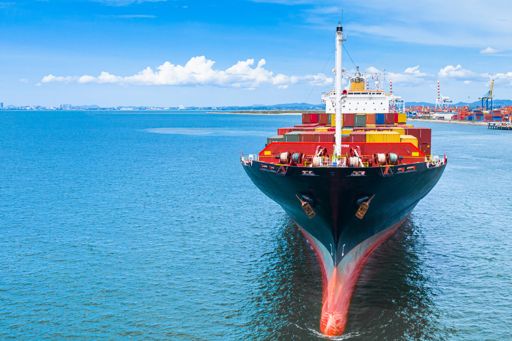On 30 May 2023, the Board Leadership Center welcomed Jos Joos, Procurement and Supply Chain Lead at KPMG in Belgium, Philip Brangers, General Manager – Supply Center Division at Daikin Europe, and Geert Opdedrynck, Deputy General Manager – Supply Center Division at Daikin Europe, for a discussion on managing supply chain risk and building resilience in uncertain times. This article summarizes the key takeaways for boards.
Supply chains are being increasingly impacted by external events, geopolitical tensions and regulations, which increases risk and uncertainty. So the model of global supply chains and centralized supply that companies have spent the past 30 years building and optimizing to reduce financial costs, may no longer be sustainable. Environmental risk, regulatory compliance and security of supply are changing how companies think about and organize their supply chains.
Within the last three years alone, supply chains were impacted by a series of events, including (but not limited to) a global pandemic, a fire at a semi-conductor plant in Japan, a snowstorm in Texas, USA, a stuck container ship in the Suez Canal, a(n ongoing) war in Ukraine – affecting global supplies of natural gas, crude oil, fertilizer, wheat, barley, rare minerals, etc. – and rising tensions between Taiwan and China.
At the same time, the regulatory environment (within Europe) is changing at unprecedented speeds. Many local authorities have already implemented or announced new, impactful ESG (reporting) legislation. Among others:
- The Swiss Ordinance on Due Diligence and Transparency regarding Minerals and Metals from Conflict Areas and Child Labor came into force on 1 January 2022 and new Swiss due diligence obligations entered into force in January 2023. Companies must follow the new requirements for annual reports starting in 2024, covering the business year 2023.
- The Transparency Act in Norway came into effect on 1 July 2022[1]. Companies must publish their first reports by 30 June 2023.
- The German Supply Chain Due Diligence Act took effect on 1 January 2023 for companies with at least 3,000 employees and from January 2024 for companies with at least 1,000 employees.
- The European Union is preparing a broader EU initiative – the EU Corporate Sustainability Due Diligence Directive (CSDDD) – applying to large companies as of 2025, including significant penalties for non-compliance.
For more information on relevant regulations, read our Supply chain risk and resilience boardroom questions.
Complexity brings opportunity
Recent events, new products, new business models, new markets, pressure to decarbonize the supply chain, localization/decentralization – all these factors bring added complexity to supply chains, all while new regulations bring increased reporting requirements.
For Daikin though, they also see opportunities – for example, the switch from combustion to heat-pump heating in private homes, a technology they are pioneers in. Decarbonization, the EU Green Deal and national authorities support this transition with incentive campaigns for end-users, thus massively expanding the market for heat-pumps. At the same time, they are preparing for their competitors to make the switch and also start sourcing parts from the same (currently) limited pool of suppliers.
Managing supply chain risk
If increased complexity is a given, what can companies do to ensure they are prepared?
Companies can take either a reactive or proactive approach to managing supply chain risk. In the former, they are reacting to supply chain disruptions as they arise. However, this may lead to a scenario where an event occurs, and the company must find a new supplier – a process with a potentially long lead time – on short notice.
On the other hand, a proactive approach combines multiple risk elements to formulate a resilient supply chain strategy. Companies would establish a supply chain risk management governance model, policies and procedures, roles and responsibilities, etc. and develop and standardize risk management processes. This is the preferred approach as it allows companies to immediately act as risks occur, thus minimizing the impact on company operations and performance. How to build a resilient supply chain will be discussed in the section below.
Building supply chain resilience
Creating full supply chain visibility
Companies need to know what’s going on in their supply chains and where – not only with their Tier 1 suppliers, but also their Tier 2, 3, and N suppliers. Taking a proactive approach to supply chain risk management provides increased visibility and transparency into the supply chain, so companies can identify vulnerabilities, quantify the impact of potential risks, simulate mitigation strategies to determine their effectiveness, and make informed decisions.
Beyond compliance with new regulations and ensuring sustainability through their supply chains, knowing their suppliers throughout the supply chain is also necessary for companies to understand their supplier network and whether they have an overreliance on any supplier – either directly or indirectly. It’s also increasingly a topic of interest for management and the board, who want to understand the current situation, action plans, etc.
At Daikin, they recognize that while diversification in suppliers can dissimulate risk, it’s not always feasible. An overly specialized component may only be sourced from one (or a few) supplier(s), whereas another design may offer more choice. So their supply chain and design teams work closely together in an effort to find the right balance.
Ensuring data quality
Many people have heard that “data is the new gold”. When it comes to supply chains, it’s no less important, but for it to be useful, companies need to ensure they have the best data quality by reducing duplicates, categorizing (spare) materials, etc. This can help minimize inventory costs, enable a quick reaction in the case of unexpected issues – such as by being able to identify nearby (spare) parts or potential substitutes – and enable companies to meet the increasingly demanding reporting requirements of new regulations.
At Daikin they continuously review their operating model, processes, IT systems and ways of working to ensure they remain efficient and effective. They visualize their decisions using the “supply chain triangle” to balance the cost, customer service and working capital – all while keeping a focus on CO2 reduction and sustainability. Through that lens and with the use of quality data, they were able to analyze the seasonality of their sales and switch to a slower, less carbon intensive shipping method in the low season, while still meeting customer demand.
Network modeling
Network modeling enables companies to understand the costs, timings, risks and benefits of the different strategies, to make improvements in the design, and to tactically allocate capacity and create flexibility in sourcing. The ability to integrate strategic considerations, such as ESG factors, into network modelling and perform several scenario simulations, makes it a strong tool to effectively and proactively diminish supply chain risk, allowing companies to optimize their network modelling according to their strategy, specific situation and expected occurrences.
Improved supply chain planning
In today's highly uncertain conditions, effective business and supply chain planning has become more critical than ever. To enhance planning effectiveness, it needs to be integrated across key functions, such as manufacturing, supply chain, sales, finance, and HR so that production, supply, demand, and resources are aligned. To stay resilient companies must harmonize disparate planning processes and systems in end-to-end planning to enabling them to make comprehensive trade-off decisions. This includes improved sales and operations planning, demand management, and operational planning and scheduling.
The pace of change is not slowing down, and supply chain disruption will not disappear. This requires more long-term planning, increasing visibility, and decision making that involves the end-to-end supply chain – with the right technology to facilitate along the way – in order to manage risks and remain resilient.
About the Board Leadership Center
KPMG’s Board Leadership Center (BLC) offers non-executive and executive board members – and those working closely with them – a place within a community of board-level peers. Through an array of insights, perspectives and events – including topical seminars and more technical Board Academy sessions – the BLC promotes continuous education around the critical issues driving board agendas.
Contact our Board and Supply Chain experts
Connect with us
- Find office locations kpmg.findOfficeLocations
- kpmg.emailUs
- Social media @ KPMG kpmg.socialMedia





